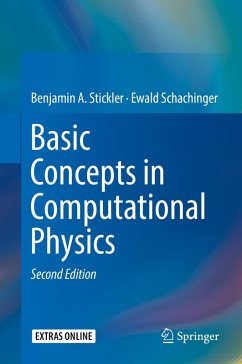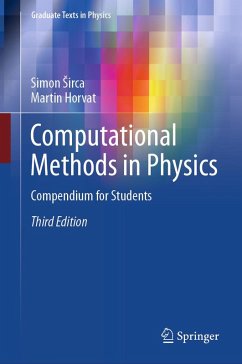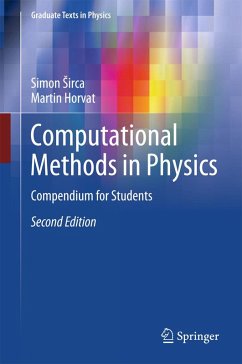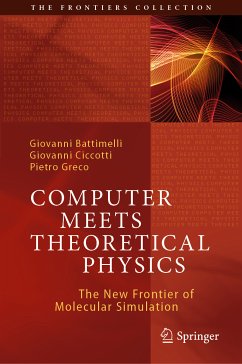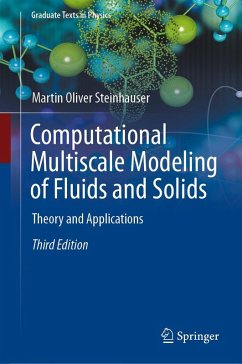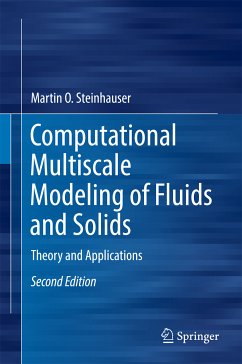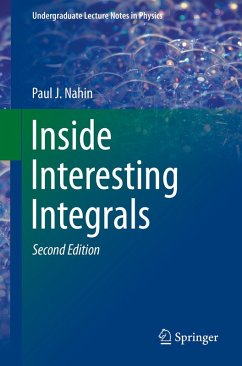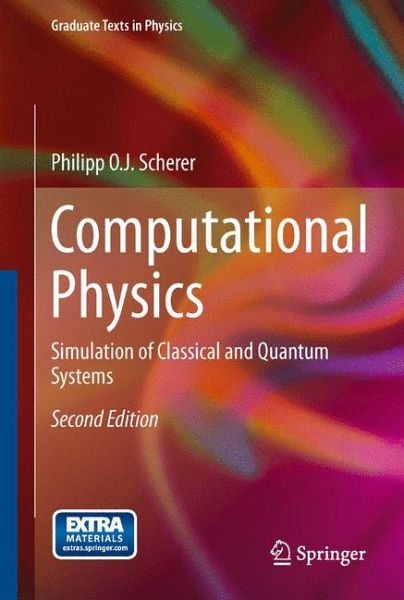
Computational Physics (eBook, PDF)
Simulation of Classical and Quantum Systems
Versandkostenfrei!
Sofort per Download lieferbar
48,95 €
inkl. MwSt.
Weitere Ausgaben:

PAYBACK Punkte
24 °P sammeln!
This textbook presents basic and advanced computational physics in a very didactic style. It contains very-well-presented and simple mathematical descriptions of many of the most important algorithms used in computational physics.The first part of the book discusses the basic numerical methods. The second part concentrates on simulation of classical and quantum systems. Several classes of integration methods are discussed including not only the standard Euler and Runge Kutta method but also multi-step methods and the class of Verlet methods, which is introduced by studying the motion in Liouvi...
This textbook presents basic and advanced computational physics in a very didactic style. It contains very-well-presented and simple mathematical descriptions of many of the most important algorithms used in computational physics.
The first part of the book discusses the basic numerical methods. The second part concentrates on simulation of classical and quantum systems. Several classes of integration methods are discussed including not only the standard Euler and Runge Kutta method but also multi-step methods and the class of Verlet methods, which is introduced by studying the motion in Liouville space. A general chapter on the numerical treatment of differential equations provides methods of finite differences, finite volumes, finite elements and boundary elements together with spectral methods and weighted residual based methods.
The book gives simple but non trivial examples from a broad range of physical topics trying to give the reader insight into notonly the numerical treatment but also simulated problems. Different methods are compared with regard to their stability and efficiency. The exercises in the book are realised as computer experiments.
The first part of the book discusses the basic numerical methods. The second part concentrates on simulation of classical and quantum systems. Several classes of integration methods are discussed including not only the standard Euler and Runge Kutta method but also multi-step methods and the class of Verlet methods, which is introduced by studying the motion in Liouville space. A general chapter on the numerical treatment of differential equations provides methods of finite differences, finite volumes, finite elements and boundary elements together with spectral methods and weighted residual based methods.
The book gives simple but non trivial examples from a broad range of physical topics trying to give the reader insight into notonly the numerical treatment but also simulated problems. Different methods are compared with regard to their stability and efficiency. The exercises in the book are realised as computer experiments.
Dieser Download kann aus rechtlichen Gründen nur mit Rechnungsadresse in A, B, BG, CY, CZ, D, DK, EW, E, FIN, F, GR, HR, H, IRL, I, LT, L, LR, M, NL, PL, P, R, S, SLO, SK ausgeliefert werden.





